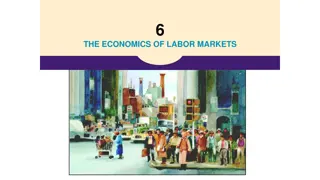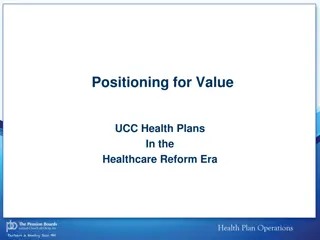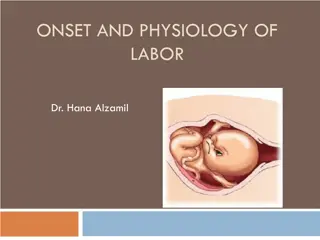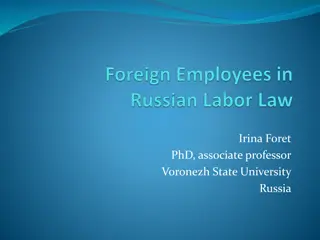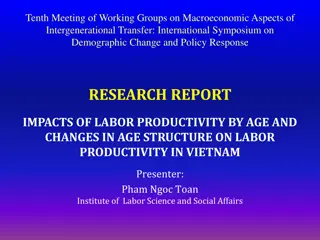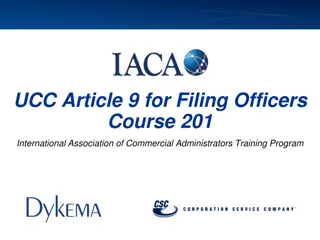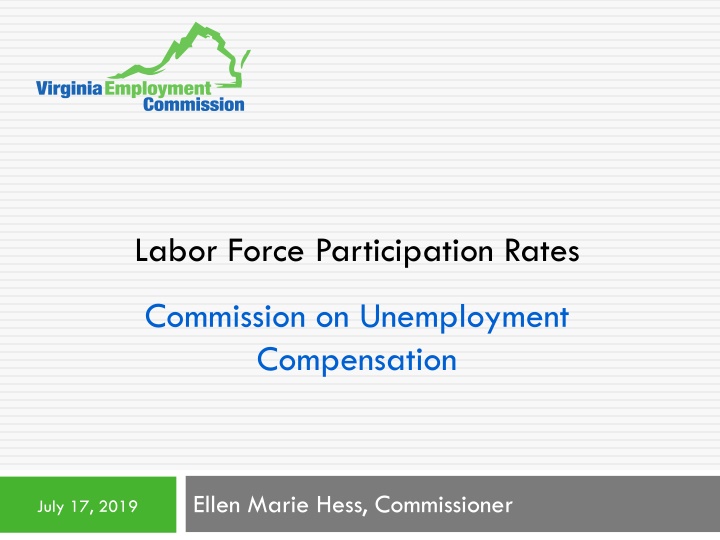
Labor Force Participation Rates in Virginia: Trends and Analysis
Explore the labor force participation rates in Virginia, including definitions, calculation elements, comparisons with the U.S., prime age rates, and county-level data. Understand what influences the workforce dynamics and economic indicators in Virginia based on comprehensive statistical analysis.
Download Presentation

Please find below an Image/Link to download the presentation.
The content on the website is provided AS IS for your information and personal use only. It may not be sold, licensed, or shared on other websites without obtaining consent from the author. If you encounter any issues during the download, it is possible that the publisher has removed the file from their server.
You are allowed to download the files provided on this website for personal or commercial use, subject to the condition that they are used lawfully. All files are the property of their respective owners.
The content on the website is provided AS IS for your information and personal use only. It may not be sold, licensed, or shared on other websites without obtaining consent from the author.
E N D
Presentation Transcript
Labor Force Participation Rates Commission on Unemployment Compensation Ellen Marie Hess, Commissioner July 17, 2019
What is Labor Force Participation? 2 Labor Force Participation is the number of people in the labor force as a percentage of the civilian non-institutionalized population 16 years and over. The prime age labor force participation rate is calculated similarly, except only people between the ages of 25 and 54 are considered. Source: U.S. Bureau of Labor Statistics Glossary
Elements of the Calculations 3 Labor force includes: Employed people doing any work, including part time work, for pay People who are not employed, but actively seeking work Labor Force does not include: Anyone under the age of 16 years Anyone not working and not seeking work, or expecting to be called back to work
Labor Force Participation Rates (LFPR) for Virginia 4 Virginia LFPR 70.0 69.0 68.0 67.0 66.0 65.0 64.0 Source: Bureau of Labor Statistics https://www.bls.gov/lau/rdscnp16.htm
Labor Force Participation Rates for Virginia vs. U.S. 5 70.0 69.0 68.0 67.0 66.0 65.0 64.0 63.0 62.0 1998 1999 2000 2001 2002 2003 2004 2005 2006 2007 2008 2009 2010 2011 2012 2013 2014 2015 2016 2017 2018 2019 VA LFPR US LFPR Source: Bureau of Labor Statistics
Labor Force Participation Rates Prime Age 7
County vs. County Comparison 8 Arlington County Dickenson County Population (2018) 237,521 Population (2018) 14,523 Growth (%) since 2010 Census 14.40% Growth (%) since 2010 Census -8.70% Labor Force Participation Rate (2017) 77.3 Labor Force Participation Rate (2017) 35.3 Prime Age LFPR (2017) 86.6 Prime Age LFPR (2017) 56.7 Unemployment Rate (2018) 2.0 Unemployment Rate (2018) 5.2 High School Diploma or More - % of Adults 25+ (2017) 93.90% High School Diploma or More - % of Adults 25+ (2017) 74.50% Bachelor's Degree or More - % of Adults 25+ (2017) 74.10% Bachelor's Degree or More - % of Adults 25+ (2017) 9.30% Avg. Wage per Job $92,755 Avg. Wage per Job $39,764 Median Household Income (2017) $114,705 Median Household Income (2017) $33,383
Why Do Individuals Abstain From the Labor Force? 9 Illness or disability (leading cause for men) To care for a family member (leading cause for women) Retirement To seek further education Discouraged with job opportunities in their area Source: Congressional Budget Office Factors Affecting the Labor Force Participation of People Ages 25 to 54
Policies That Can Raise Rates 10 Policies aimed at making workplaces more accommodative for people with disabilities, and those caring for family members Policies aimed at encouraging seniors to remain in the workforce Six states have enacted laws to turn the state into a model employer of disabled individuals Policies intended to address various social issues including transportation and the opioid epidemic Source: National Conference of State Legislatures State as Model Employer Policies






